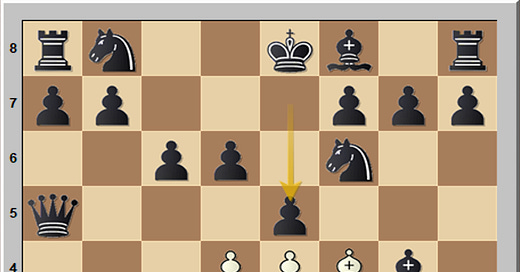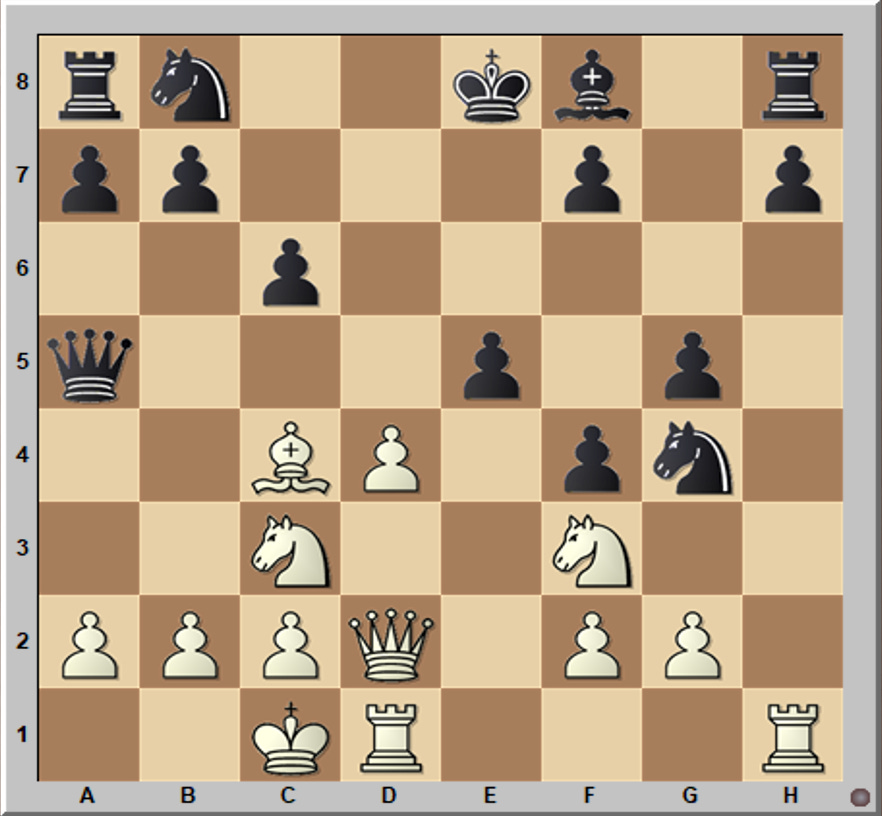I scored 3.5/4 in the Nebraska Hall of Fame Celebration tournament last weekend, which was good for shared second place and a little more than $1000. Not too bad for a weekend’s work! (Tournament organizer Rodney Malpert put a lot of his own time and money into the event, and the prize fund was more generous than usual for a tournament this size). I won my first three rounds, and drew in round four against my Nebraska friend/nemesis JJ Lang. JJ also won the blitz tournament outright, so it was a nice weekend for him. All in all, I can’t complain about the result, especially since I was coming off the first month with a newborn. But after reviewing my games, I wasn’t happy with my play. I played it too safe.
If you’ve been reading this newsletter for awhile, you probably know that I played poker professionally for several years. Poker taught me a lot of things that I now apply to chess, but the biggest one was to be practical. Crazy plays get a lot of attention, but the way to get the money in the long run is to apply a sound strategy consistently. When I came back to chess, I applied the same strategy: Play reasonable moves, manage my time well, and take advantage of the opponent’s mistakes. From a competitive standpoint, this strategy has served me well. Since returning to chess, I’ve gone from the 2200s to the 2400s with a lot of nice results along the way. As IM and coach Andras Toth says, “Normal beats crazy.” But it’s possible to take this approach too far, and that’s what I did in this tournament.
In this position from round 2 vs. Richard Perry, he just responded to h3 with e5, giving me the chance to trade bishops with hxg4 exf4. Motivated by the desire to keep a “normal” position, I fairly quickly turned down this chance and played Be3. But walking to the bathroom a few moves later, I started thinking about the position more, and realized it was probably great for me. This is possible to work out with simple logic: exf4 releases the pressure on the center, leaving White with a dominant pawn center; and hxg4 opens the h-file for my rook. Both captures improve the pawn structure for me. The pawn on g4 is weak, but so is Black’s pawn with f4, and I could even afford to sacrifice the g4 pawn and still have a great position. A sample line is 7. hxg4 exf4 8. Qd2 g5 9. O-O-O Nxg4 10. e5 dxe5 11.Bc4.
White has a huge lead in development and Black’s king is caught in the center. White is completely winning. This was the move I was the least happy about in the whole tournament. It was really an evaluation challenge, and I have a whole book about that! Had I slowed down a little and thought outside the box, I would have figured it out.
Here’s another example from round 1 vs. Matt Buckley. With the bishop pair, pawn center, and White’s bishop locked out of the game, I’m firmly in control. I played b6, reasoning that rather than trade off queenside pawns, I could just secure my own and then take all of White’s. This is still very good, but the most crushing move was the clever a4! White can’t take because Rxa4 Bxc2 traps the knight, so the knight would have to move away, and Black is romping. Again, I didn’t consider a creative option.
I went on to win both of these games, but I could have done so in a way that was much cooler, more creative, and faster. (Finishing games quickly is also a big deal when you’re trying to win a tournament.)
My best game was in round 3, where I used the Nimzowitsch Sicilian from my new Chessable course with the Black pieces. My opponent went for a line where I recommend a double pawn sacrifice, which forced me to play aggressively and dynamically. You can’t really play it safe when you’re starting out down two pawns. As it turned out, this led to my best game of the tournament, as I played a nice attack and finished the game with a mating combination. I did a video recap of this game on YouTube. (By the way, I’m planning to start doing more YouTube content, so subscribe to my channel if you want to stay up-to-date.)
I think there’s a lesson for me in this game. Despite my generally conservative tournament strategy, I’m really an aggressive player at heart. I’m at my best when I have the initiative. In my next tournament, I’m going to open it up, take more chances, and have more fun.







Great to see your realization of needing to open things up and take more chances. I too found similar notes in my chess as well. I play best when I am fighting for initiative and being super aggressive. I had no idea.
Grat stuff, love your courses